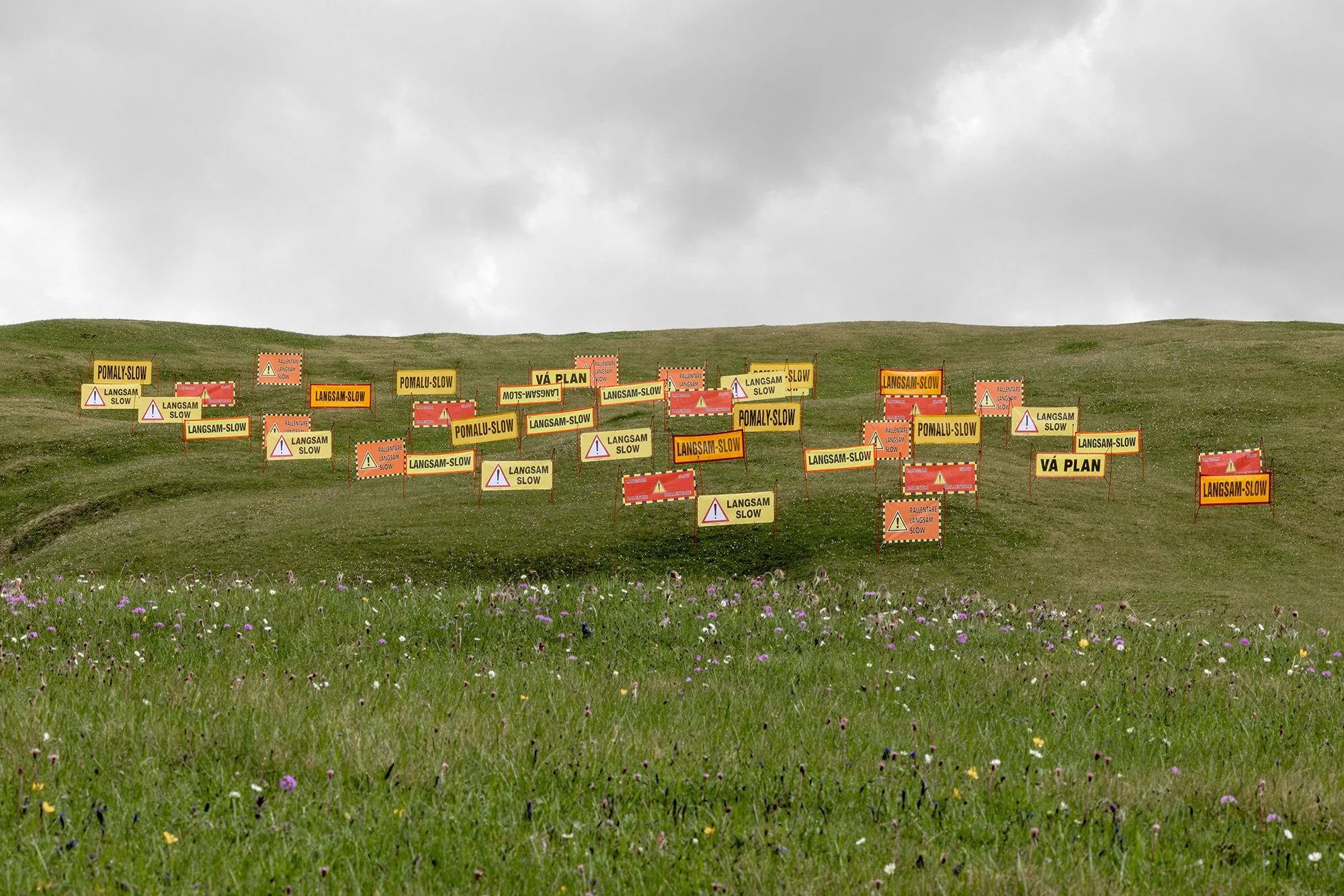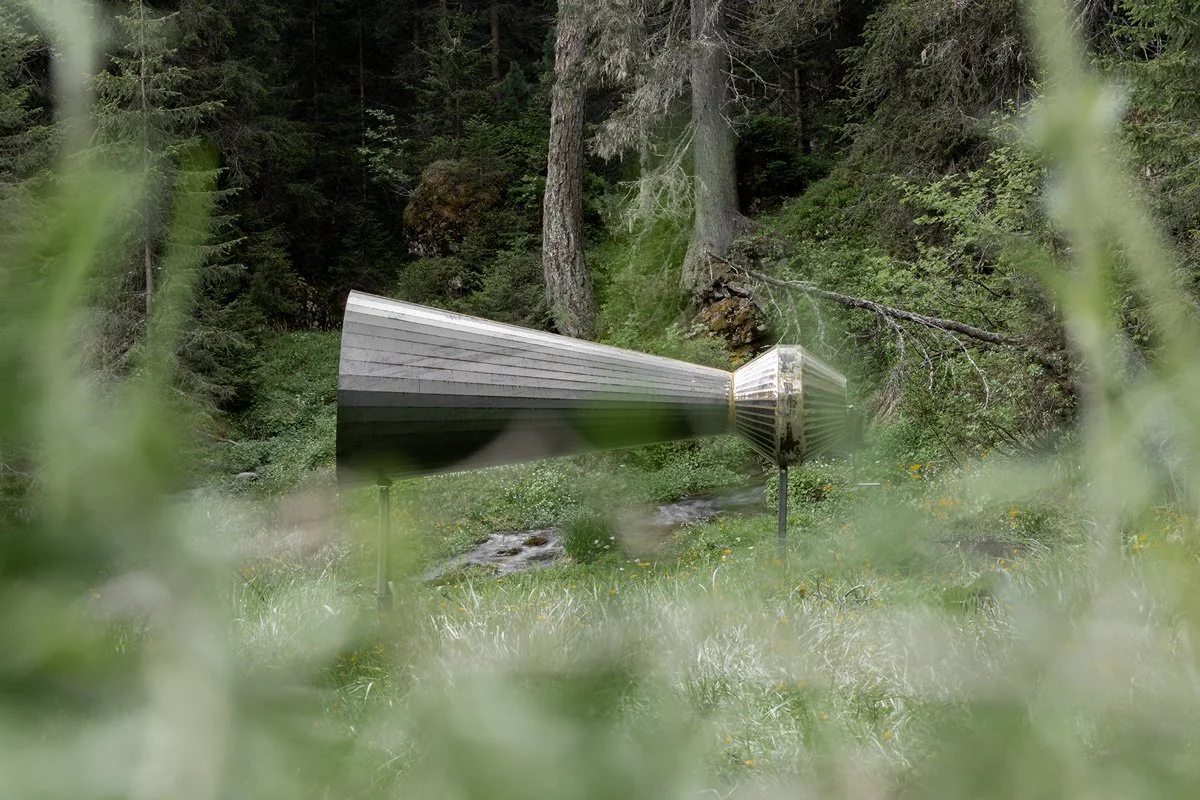Langsam - Slow - Rallentare - Và Plan
Theresa Hattinger
The windbreak fabric panels you see here are the same ones skiers encounter on the slopes before difficult sections, dangerous intersections, or obstacles in winter. Decontextualized, both by season and location, their message changes purpose and becomes a suggestion to slow down, not for immediate physical safety reasons, but for existential and ecological ones in the medium to long term. The grassy slope hosting the artwork becomes a space for reflection on themes and phenomena such as, on one hand, hyper-capitalist consumerism and rampant progress, and on the other, downshifting, cutting greenhouse gas emissions, and rethinking the human-nature relationship. The materials composing the installation were loaned by local ski resorts and an Austrian technical sponsor. In winter, they will return to their function as warnings on the ski slopes.





Exhibit place Prá de Pütia
The pass offers one of the easiest and most scenic accesses to the Puez-Odle Nature Park of the Dolomites. From here, you can set off on a walk along the circular route around Sas de Pütia. The route starts at the Passo delle Erbe car park (2,006 m) and climbs up the western slope of Sas de Pütia across the Putia meadows, which have been used for grazing and hay making for centuries. From here, there is a beautiful view on the Putia peak and the ‘Roa dl Maier’, the large landslide that formed the Moibach Gorge / Moibachschlucht, where the original sequence of sedimentation layers, dating back more than 200 million years, on which the Dolomites rest, is clearly visible. Incidentally, the upper layer of the landslide, called the Werfen Formation, is characterised by a guide fossil (which serves to identify the formation), called Claraia Clarai, after the surname of a Badiot priest who, many years ago, was known as a strange man “who struck stones’’ and in doing so discovered a fossil shell that was one of the few living species that survived the main mass extinction in the history of our planet: the Permian-Triassic extinction some 252 million years ago. Much more recent, and closer to the history of our ancestors, are the findings (worked rock fragments dating back to around 8,000 years) which testify to the fact that these terrains (at the Passo delle Erbe as well as the nearby Alpe di Luson) were used by hunters in the Neolithic (8000-3500 BC) and possibly also the Mesolithic (10,000-8000 BC) who used the mountain clearings as hunting grounds and the Alpine passes as communication routes. While close to the slopes of Cialnéur, again along the Putia Tour, archaeologists from the Autonomous Province of Bolzano’s Archaeological Heritage Office and the Istitut Cultural Ladin ‘Micurà de Rü’ found an Iron Age (13th century B.C.) cult site with a votive hearth in which a handful of seeds as well as animal offerings were thrown, more than two millennia ago.
After this plunge into the past, we ascend to the Forcella del Putia (2,362 m). After a short, steep descent, the trail continues, with moderate ups and downs over beautiful high mountain meadows, in the direction of the Ütia Vaćiara Hut and the Göma Hut, before returning to the Passo delle Erbe car park. By the way, this name was given because of the variety of flora in the area. Here you will find new stone pine forests, which have a strong natural regeneration aspect, an almost unique situation in South Tyrol. Also noteworthy are the spruce stands in the Pütia forests and the larch forests not far from Halsl. Extensive carpets of rhododendron and dwarf pine have developed on the western slopes of Pütia. There are also numerous species of flowers, numbering over 40.












